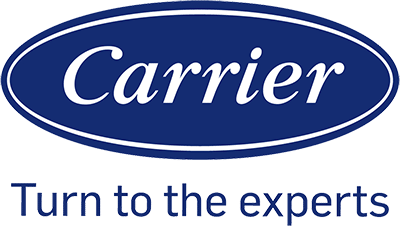HVAC System Overview

An HVAC system, an acronym for Heating, Ventilation, and Air Conditioning, serves a pivotal role in maintaining indoor comfort by regulating temperature, airflow, and air quality.
The primary function of these systems is to facilitate heat exchange, ensuring spaces are heated or cooled, and that air circulates effectively.
Components of an HVAC System:
- Heating: This typically involves a furnace or heat pump to provide warmth, consuming energy to generate heat.
- Ventilation: Ensuring air movement and quality, the ventilation component replaces or exchanges air within a space.
- Air Conditioning: Utilizes refrigeration to cool indoor air, an essential feature for temperature control during warmer months.
HVAC systems vary widely in complexity from basic residential setups to sophisticated commercial installations.
Energy consumption is a critical aspect, with modern HVAC systems designed for efficiency, responding to environmental concerns and operational costs.
Understanding the fundamentals—often termed HVAC 101—is essential for anyone looking to maintain or upgrade their HVAC units.
A well-maintained system optimizes energy use and improves longevity, directly impacting utility expenses and environmental footprint.
HVAC Efficiency Tips:
- Regular maintenance to ensure system parts are functioning correctly.
- Installation of programmable thermostats for better temperature control.
- Updated insulation to retain desired temperatures with less energy use.
Heating Components
The heating components of an HVAC system are crucial for maintaining a comfortable indoor temperature. They consist of various devices that generate and transfer heat through different processes.

Furnaces and Boilers
A furnace functions by blowing heated air through ducts that deliver the warm air to rooms throughout the property via air registers or grills.
This type of heating component is typically powered by natural gas, propane, heating oil, or electricity.
On the other hand, boilers heat water, providing either hot water or steam for heating.
Steam is distributed via pipes to steam radiators, while hot water can be supplied to radiant floor systems or baseboard radiators.
- Gas Furnaces
- Fuel Type: Natural gas or propane
- Heating Method: Ignites the fuel to produce combustion gases
- Heat Distribution: Uses a fan to circulate hot air
- Boilers
- Fuel Type: Gas, oil, or electricity
- Heating Method: Heats water to create steam or hot water
- Heat Distribution: Sent through radiators or underfloor systems
Heat Pumps
Heat pumps are versatile heating components that perform both heating and cooling functions.
During the colder months, they extract heat from the outside air or ground and transfer it indoors.
A key benefit of using a heat pump is its efficiency, as it moves heat rather than generating it through combustion.
- Types of Heat Pumps
- Air-source: Transfers heat between the house and outside air
- Ground-source: Also known as geothermal, transfers heat between the house and the ground or a nearby water source
Heat Exchangers
A heat exchanger in an HVAC system is a device that allows for the transfer of heat from one medium to another.
In the context of a furnace, the heat exchanger is crucial as it separates the combustion process from the breathing air, ensuring safe operation.
It takes in the combustion gases generated by the furnace and heats the air without direct contact.
- Functionality
- Separates combustion gases from breathable air
- Transfers heat from combustion gases to the air within the ductwork
Cooling Components

The cooling components of an HVAC system play a critical role in the regulation of indoor temperature by removing heat from the indoor environment and releasing it outside.
Air Conditioners
Air conditioners are central to cooling in HVAC systems. They come in various forms, including central air conditioners, ductless mini-splits, and window units.
Central air conditioners are common in residential and commercial settings and typically work in conjunction with a duct system to distribute cool air throughout a space.
Ductless mini-splits, on the other hand, are ideal for cooling specific areas without the need for extensive ductwork.
Evaporator and Condenser Coils
The evaporator coil is located inside or near the air handler where it absorbs heat from the air passing over it.
The condenser coil is part of the outdoor unit and releases the absorbed heat into the outdoor air.
Together, these coils are vital for the heat exchange process, which is essential for cooling.
- Evaporator Coil: Absorbs heat from indoor air
- Condenser Coil: Releases heat to outdoor air
Refrigerant and Compressors
The refrigerant is the substance that circulates through the evaporator and condenser coils and is responsible for absorbing and releasing heat.
Refrigerant lines connect the indoor and outdoor units, allowing the refrigerant to flow between them.
The compressor is a crucial component that pressurizes the refrigerant, enabling it to carry heat from the interior to the exterior of a building.
| Components | Functions |
|---|---|
| Refrigerant | Transfers heat via phase changes, circulating between coils |
| Compressors | Pressurize refrigerant, enabling efficient heat transfer |
Airflow and Ventilation

Proper airflow and ventilation are crucial for maintaining indoor air quality and comfort in any HVAC system.
They ensure that air circulates efficiently, humidity is controlled, and the atmosphere within a space is kept at an optimal level.
Ductwork and Vents
Ductwork serves as the circulatory system of an HVAC unit, guiding air through the building.
Vents are the points of entry and exit for air within rooms. They must be strategically placed and sized appropriately to facilitate effective air distribution.
- Ensures even air distribution
- Minimizes energy loss
- Reduces noise
Blowers and Fans
Blowers and fans are the components that move air through the HVAC system. They maintain consistent airflow, preventing stagnation and uneven heating or cooling.
- Dehumidification, by moving moist air out
- Ensuring indoor air quality through effective circulation
Air Handlers and Filtration
The air handler is responsible for managing the air that circulates through the system. It typically houses the blower, heating and cooling elements, and filters.
Effective filtration is integral to maintaining clean air, which involves:
- Removing particulates from the air
- Improving air quality by trapping dust, pollen, and other contaminants
Controls and Thermostats

The effectiveness of an HVAC system hinges on its capacity for precise temperature control, which is primarily governed by the controls and thermostats.
These devices enable users to set and maintain desired comfort levels within their spaces.
Standard and Programmable Thermostats
Standard Thermostats are the most basic form of temperature control in HVAC systems. They provide manual adjustment of the ambient temperature by allowing users to set a single temperature that the system will aim to maintain.
Programmable Thermostats, on the other hand, offer greater flexibility.
Users can set specific temperatures for different times of the day or week to optimize comfort and energy usage.
This can lead to significant energy savings, as heating and cooling can be reduced when the space is unoccupied or during sleep hours.
- Benefits:
- Adjust temperatures according to a set schedule
- Reduce energy consumption
- Maintain consistent temperature levels
Smart Thermostats and Controls
Smart Thermostats represent the next level in HVAC control technology. These devices can be connected to the internet and controlled remotely via smartphones or computers.
They offer advanced features such as:
- Learning capabilities: Adjusting temperature settings based on user behavior patterns
- Geofencing technology: Automatically modifying settings based on the location of the occupants
The incorporation of Smart Controls provides users with detailed data on their system’s performance and energy consumption, enabling further optimization.
- Key Features of Smart Thermostats:
- Remote access and control
- Energy usage reports
- Maintenance reminders and alerts
By utilizing smart thermostats and controls, users can achieve a higher level of comfort and energy efficiency in their HVAC systems.
The integration of these sophisticated technologies allows for a more responsive and intuitive temperature control environment.
Maintenance and Energy Efficiency
Regular maintenance is essential to keep an HVAC system running efficiently and to maintain indoor comfort for homeowners.
A well-maintained system requires less energy, which leads to lower utility bills and extends the lifespan of the unit.
Homeowners should adhere to a maintenance schedule to avoid costly repairs and maintain energy efficiency.
Regular Maintenance:
- Inspection: A professional HVAC technician should inspect the system at least once a year.
- Cleaning: Remove debris from around the unit and clean filters monthly to ensure proper airflow.
- Ductwork: Check for leaks or blockages, as these can affect system performance and energy use.
Energy Efficiency:
- Upgrades: Consider upgrading to a unit with a higher SEER (Seasonal Energy Efficiency Ratio) rating for greater energy savings.
- Thermostat: Install a programmable thermostat for better temperature control and energy use.
Tips for Homeowners:
- Monitor the system for unusual noises or performance issues.
- Replace any worn components promptly.
- Seal windows and doors to minimize energy loss.
Routine checks and cleanings can be done by homeowners, but repairs and technical inspections should be handled by a certified HVAC technician.
This ensures the HVAC system operates at its best and supports energy conservation efforts.
Frequently Asked Questions
What are the main parts that make up a residential HVAC system?
A residential HVAC system typically includes a furnace, air conditioner, ductwork, thermostat, and an air handler or evaporator coil.
These components work together to regulate indoor air temperature and quality.
How does an HVAC system work within a commercial building?
In a commercial building, an HVAC system functions on a larger scale, often involving multiple heating and cooling units, larger duct systems, and advanced control systems to manage different zones and maintain consistent indoor climate across extensive spaces.
What are the primary functions of the major components in an HVAC system?
The major components in an HVAC system are responsible for heating, cooling, and air circulation.
The furnace heats the air, the air conditioner cools it, the ductwork distributes the treated air throughout the building, and the thermostat regulates the desired temperature settings.
Can you list the different types of HVAC systems and their components?
HVAC systems vary from simple single-room units to complex multi-zone systems.
Key types include split systems, with separate heating and cooling units; packaged systems, where all components are housed in a single unit; and ductless mini-split systems, ideal for spaces without ductwork.
What are some critical considerations when designing an HVAC system?
When designing an HVAC system, one must consider the building’s size and layout, local climate, energy efficiency targets, and the specific heating and cooling needs of the residents or users to ensure optimal performance and comfort.
How do the mechanical elements of an HVAC system operate together?
The mechanical elements of an HVAC system operate in unison through a regulated process controlled by the thermostat.
The furnace generates warm air while the air conditioner cools the air as needed.
The air is then circulated by blowers through the ducts, and the entire system works together to maintain the desired indoor environment.




